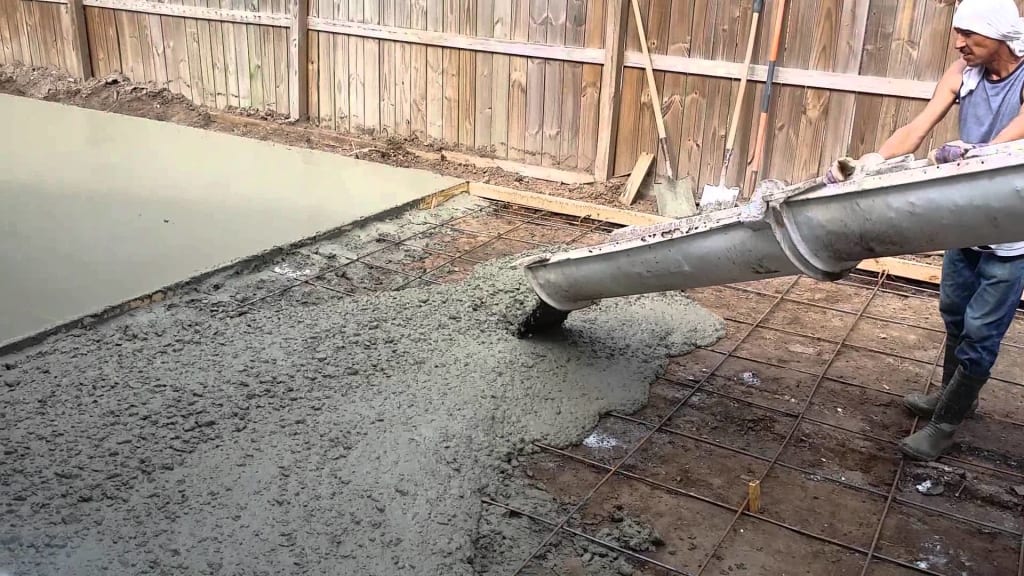Content warning
This story may contain sensitive material or discuss topics that some readers may find distressing. Reader discretion is advised. The views and opinions expressed in this story are those of the author and do not necessarily reflect the official policy or position of Vocal.
Specialty Cement: Specialty Cements Gaining Traction in the Construction Industry A New Trend to Watch
Specialty Cement

Introduction To Specialty Cement
Specialty cements are specifically formulated cement products that are engineered for specialized applications that cannot be served by traditional Portland cement. The main types of specialty cements are oil well cement, low heat cement, high alumina cement, white cement, enamel cement and others. With the increasing demand from diverse industries, production and usage of specialty cements has been rising globally in the past decade.
Oil Well Cement
Oil well cement is critical for oil and gas well construction as it is used to seal the well and prevent contamination of fluid zones. It needs to withstand high temperatures and pressures deep underground. Oil well cements are sulphate resistant, have low fluid loss properties and high early strengths. They are often blended with accelerators, retarders and lightweight additives. The oil and gas industry is a major consumer of Specialty Cement oil well cements. With continued exploration and drilling activities around the world, demand for oil well cement remains robust.
Low Heat Cement
Mass concrete structures generate heat as the cement hydrates. If this heat is not dissipated properly, it can cause cracking. Low heat cement is formulated to reduce the heat of hydration in massive concrete elements like dams, harbours and other infrastructure projects. It contain less tricalcium aluminate and has controlled particle size distribution. These changes lower the maximum temperature gain and temperature differentials during curing. This prevents thermal stresses in large volumes of concrete. Low heat cement is critical for durable construction of massive concrete works.
High Alumina Cement
High alumina cements contain a high percentage of alumina compared to regular Portland cement. They set and harden quickly even at lower temperatures. This makes them very suitable for applications that need rapid setting or where temperatures may be sub-optimal during curing. High alumina cement is used in precast concrete, hard surfaces, industrial flooring, refractory construction and other specialized areas. It offers high early strength and hardness making it a preferred choice where fast turnaround is required.
White Cement
White cement has applications where aesthetic appearance and bright colouring are important factors like architectural facades, decorativeconcrete products and landscaping. It contains less iron impurities compared to gray cement giving it a whiter appearance. White cement is used as the base in production of white architectural concrete. The bright white colour allows vibrant colouring with mineral oxides or other admixtures. It delivers aesthetic brightness suitable for high design buildings and infrastructure.
Enamel Cement
Enamel cements are refined white cement products that are extremely smooth and glass-like when finished. They are used as decorative thin coat rendering on surfaces and for tiling applications indoors and outdoors. Enamel cement offers a glossy, non-porous finish that does not fade or stain easily over time. It is ideally suited for high traffic indoor and outdoor areas requiring durable, easy to clean decorative surfaces. Enamel cement delivers attractive, low maintenance wall and floor coatings.
Growing Application Areas
Specialty cement are finding increased adoption across various industries beyond traditional construction. Oil well cement continues driving demand from oil and gas drilling and well construction activities. Low heat and high alumina cements see steady use in infrastructure like roads, bridges and dams. Green building is also boosting specialty cement adoption with its emphasis on sustainability. Building information modelling (BIM) has enabled improved cement formulation and application of specialty cements. With new applications emerging, it is evident that specialty cements will play an ever expanding role supported by the rising technical requirements of projects worldwide.
In summary, the unique properties and composition variations of specialty cements have enabled their diverse applications across industries. Their formulation is engineered specifically for harsh conditions and refined functions. Where traditional cement cannot satisfy technical or aesthetic needs, specialty cements provide expert solutions. Their usage has proliferated in applications like oil wells, massive concrete works, industrial floors and decorative concrete. Several new applications are also emerging. Overall, specialty cements represent an area of cement technology that caters sophisticated requirements through customized product development. With advanced characterization and application driven development, specialty cements will continue enhancing construction and industrial projects worldwide.
Get more insights on this topic: https://manage.wix.com/dashboard/c4ce5910-f290-4bad-9e93-c07ea06fa726/blog/597f1338-1250-45b0-a505-57db80ab98bc/edit?tab=published&lang=en
About the Creator
Enjoyed the story? Support the Creator.
Subscribe for free to receive all their stories in your feed. You could also pledge your support or give them a one-off tip, letting them know you appreciate their work.





Comments
There are no comments for this story
Be the first to respond and start the conversation.